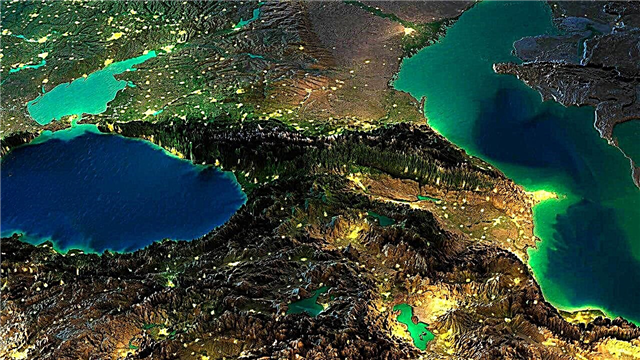Jeanne Calman is a French citizen who has the longest (documented) life expectancy. Her date of birth is February 21, 1875, the date of death is August 4, 1997, that is, the Frenchwoman lived 122 years and 164 days.
Is it possible to say that man the longest living creature on the planet? No, there are enough animals in the world that have lived much longer than Jeanne Kalman. Here are the top 5 Earth centenarians, Time magazine version.
5. Jellyfish of the genus Turritopsis
 This type of jellyfish goes apart in the ranking of centenarians. Its representatives can move from a state of maturity to a state of infantility, in other words, return youth. These jellyfish have a regular life cycle, but after ripening and mating, they return to the original state of the polyp. This process is called "transdifferentiation" and is associated with the "reconfiguration" of defective cells into new cells. Maybe these jellyfish are the key to the elixir of youth.
This type of jellyfish goes apart in the ranking of centenarians. Its representatives can move from a state of maturity to a state of infantility, in other words, return youth. These jellyfish have a regular life cycle, but after ripening and mating, they return to the original state of the polyp. This process is called "transdifferentiation" and is associated with the "reconfiguration" of defective cells into new cells. Maybe these jellyfish are the key to the elixir of youth.
4. Elephants and parrots
 On average, large parrots live for 50-70 years, and cockatoos are considered long-livers among parrots. Since 1925, the San Diego Zoo has kept a cockatoo, which arrived there as an adult bird, and it survived until December 30, 1990. And some specimens of an owl parrot from New Zealand survived to 90 years of age.
On average, large parrots live for 50-70 years, and cockatoos are considered long-livers among parrots. Since 1925, the San Diego Zoo has kept a cockatoo, which arrived there as an adult bird, and it survived until December 30, 1990. And some specimens of an owl parrot from New Zealand survived to 90 years of age.
 Elephants do not lag behind parrots, they live up to 70 years.
Elephants do not lag behind parrots, they live up to 70 years.
3. Red sea urchins and gigantic turtles
 Strongylocentrotus franciscanus, it is also a red sea urchin (although its color varies from pink or orange to almost black) from the class of echinoderms lives in the Pacific Ocean.
Strongylocentrotus franciscanus, it is also a red sea urchin (although its color varies from pink or orange to almost black) from the class of echinoderms lives in the Pacific Ocean.
The spherical body of the sea urchin is entirely covered with sharp spikes that can grow up to 8 cm. These spikes grow on a hard shell that protects the hedgehog. According to research by Thomas Ebert of the Department of Zoology, University of Oregon, the age of the “oldest” red sea urchins is about 200 years.
 Advaita, a 250-kilogram giant tortoise living in the city zoo of Calcutta (India), was the longest-lived turtle in the world. The age of the animal, according to various estimates, ranged from 150 to 250 years.
Advaita, a 250-kilogram giant tortoise living in the city zoo of Calcutta (India), was the longest-lived turtle in the world. The age of the animal, according to various estimates, ranged from 150 to 250 years.
2. Greenland whales
 Greenland whale (Balaena mysticetus) is a stocky, dark-colored whale without a dorsal fin. In length, it can grow up to 20 meters, and he loves to eat, “feeding” up to 100 tons and yielding only to a blue whale in weight.
Greenland whale (Balaena mysticetus) is a stocky, dark-colored whale without a dorsal fin. In length, it can grow up to 20 meters, and he loves to eat, “feeding” up to 100 tons and yielding only to a blue whale in weight.
He lives exclusively in fertile Arctic and subarctic waters, which is different from other whales that migrate to feed or give offspring.
Greenland whales live up to 200 years, and genes have been discovered in their genome that repair damaged sections of DNA.
1. Bivalves Arctica islandica
 One of the species of edible mollusks, it lives in two oceans - the Arctic and the Atlantic. Also known by several different common names, including Icelandic cyprina and black clam. These ocean inhabitants live an exceptionally long life. One of the two samples found (it was named Ming) lived 507 years, the other from 405 to 410 years. To determine the age of the mollusk, the researchers drilled a shell and calculated the number of its layers.
One of the species of edible mollusks, it lives in two oceans - the Arctic and the Atlantic. Also known by several different common names, including Icelandic cyprina and black clam. These ocean inhabitants live an exceptionally long life. One of the two samples found (it was named Ming) lived 507 years, the other from 405 to 410 years. To determine the age of the mollusk, the researchers drilled a shell and calculated the number of its layers.












